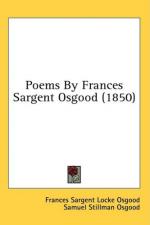|
This section contains 10,628 words (approx. 36 pages at 300 words per page) |

|
SOURCE: Petrino, Elizabeth A. “‘Silent Eloquence’: The Social Codification of Floral Metaphors in the Poems of Frances Sargent Osgood and Emily Dickinson.” Legacy 15, no. 2 (1998): 139-54.
In the following essay, Petrino discusses how Osgood and Dickinson used the floral metaphors in their poetry to criticize rigid mid-nineteenth-century social and sexual attitudes.
The expression of this divine passion ought to be divine also, and it was to illustrate this fact that flowers were ingeniously made emblematical of our most delicate sentiments; they do, in fact, utter in “silent eloquence” a language better than writing; they are the delicate symbols of the illusions of a tender heart and of a lively and brilliant imagination.
Frances Sargent Osgood, The Poetry of Flowers, and Flowers of Poetry
You ask me what my flowers said—then they were disobedient—I gave them messages.
Emily Dickinson (L 187)1
“Let me thank the little Cousin in flowers...
|
This section contains 10,628 words (approx. 36 pages at 300 words per page) |

|


